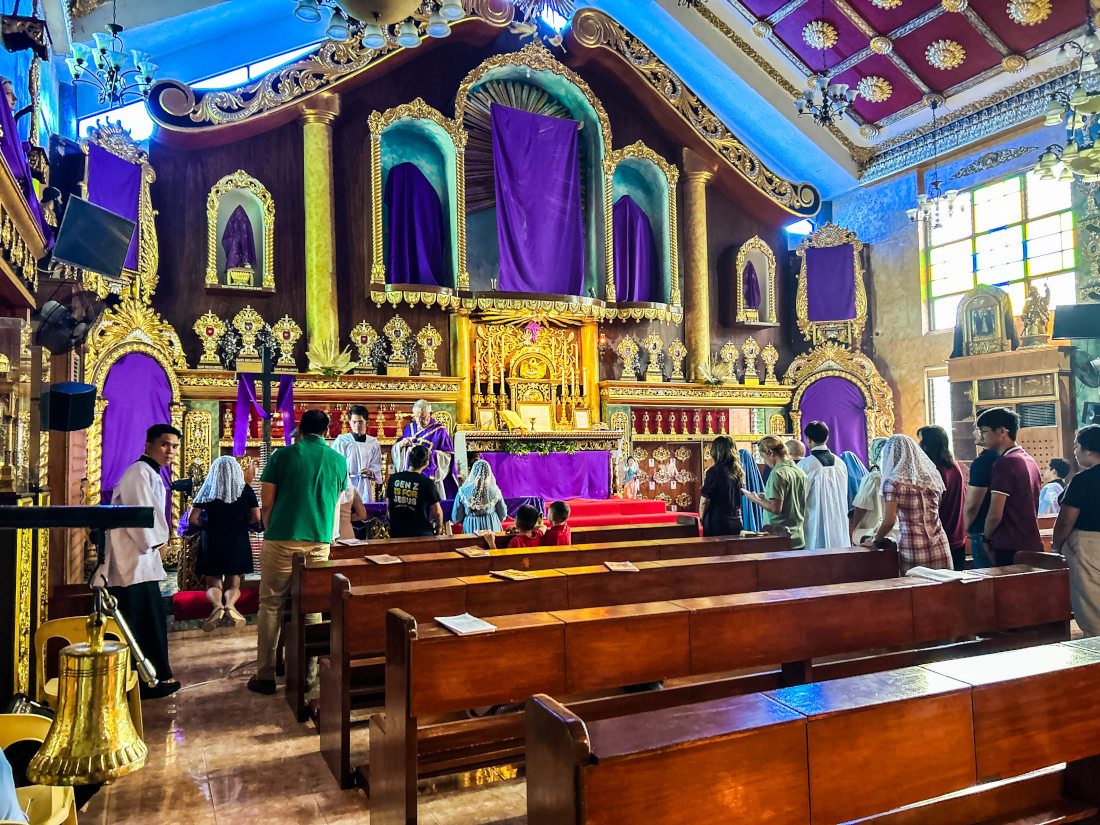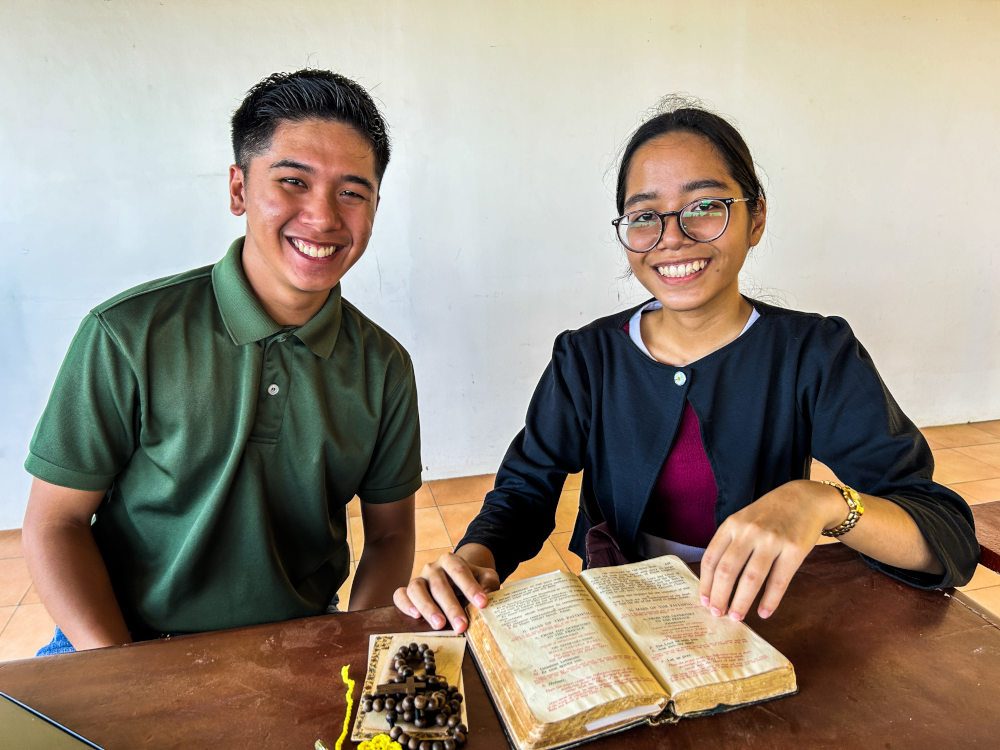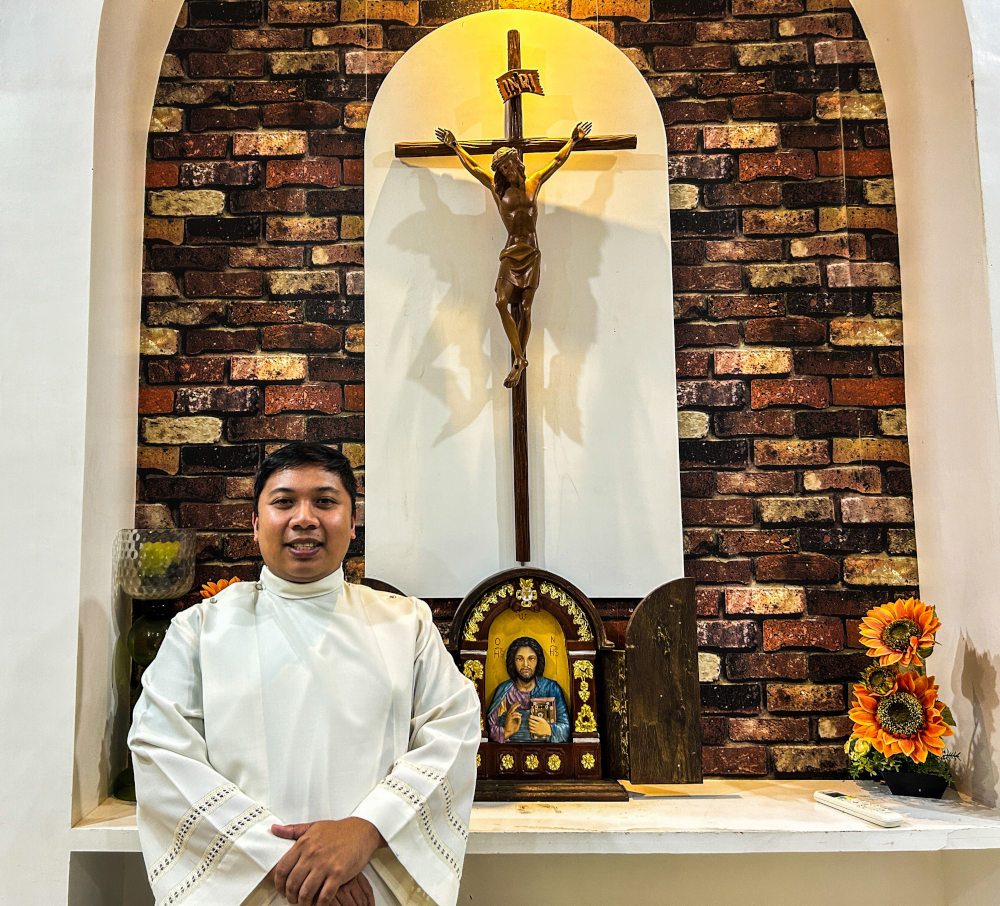SUMMARY
This is AI generated summarization, which may have errors. For context, always refer to the full article.

“Ave Maria” is how Carmel Grace Alde Fulache greets people, whether on Messenger chat to schedule the interview for this article or in real life as she talked to those who attended the Traditional Latin Mass (TLM) at the Chapel of Holy Relics in Tabor Hill in Barangay San Jose in Cebu City.
The 21-year-old home-schooled 12th grader regularly attends the TLM or the Extraordinary Form of the mass at Tabor Hill every Sunday at 1 pm with her aunt and cousin. More than half of those who attend the mass are like Carmel, young and religious.
Soft-spoken and deeply respectful, Fulache told Rappler the TLM is central to her Catholic faith and the old rite’s use of Latin and its ceremony make it very solemn and meaningful to her. “It has deepened my faith,” she said.

Quoting St. Francis of Assisi, she said it is in this form of the mass that she sees the “greatest reverence possible that we owe to God.”
It’s quite a transformation for Fulache, who described herself as having lived a “sinful” life with vices when she was just 16, before she started attending the TLM. She said she would only go to Sunday mass depending on her mood. Often she would miss one Sunday in a month. Her cousin, Pio Gerald Fulache Antiquina, described her transformation as remarkable.
Fulache, who uses youthspeak slang such as “TBH” for “to be honest” in spoken conversations, said her first Latin Mass was on April 21, 2019, an Easter Sunday. She described it in her diary as “beautiful and amazing.” But it was after a Latin Mass on October 25, 2020 with Antiquina and her aunt, Antiquina’s mother, that she started regularly attending TLM. In that Latin Mass, Fulache said she realized that she had much to learn about her faith and started reading spiritual books.
She also started wearing a veil, both in TLM and Novus Ordo masses. Fulache would sometimes attend two masses in one Sunday – a TLM and a regular mass.
“(As) women, we represent the church and the church is the Bride of Christ so as Bride of Christ that’s why we veil – veiling what is sacred,” she said.
Fulache runs a small business selling veils online – Similis Mariae or Like Mary. Some of those who regularly attend the TLM at Tabor Hill are like Fulache, young women wearing veils.
A TLM can be disorienting for someone who hasn’t attended one. There is a missal with English translation that serves as a liturgical guide. Aside from the use of Ecclesiastical Latin, the constant kneeling, Gregorian chants, the ad orientem posture of the priest with his back to the people and toward the altar, and communion by tongue while kneeling to receive the host, the key difference is in the participation of the laity.
“It’s more on the principle of active participation,” explained Fr. Mhar Vincent R. Balili, rector of the Seminario Mayor de San Carlos, who has a licentiate in liturgy after studying in Rome.
In the TLM, the priest is the one doing the offering and people are spectators, said Fr. Balili. In the current form of the mass, “it’s the people who are offering the mass with the priest.”
“When you talk about active participation in Vatican II, people would actively participate through singing, responses and gestures. And one of the ways for active participation is the language, that’s why it was translated,” Fr. Balili said.
The liturgy was changed by the Second Vatican Council., which was held from 1962 to 1965 to take up reforms in the Catholic Church.
The TLM is deeply solemn, transcendental even, especially for those who attend for the first time.
“It gives us the silence, (the break) from the 24/7 noise that we experience the rest of the week,” Antiquina said. That silence, he said, gives people time during the mass to reflect and pray for others.
“In that silence I can have time to be alone with the Lord. Despite everyone, I can have my own interior prayer,” he said.
Pope Francis, however, imposed restrictions on the Latin Mass through “Traditionis custodes” that he issued on July 16, 2021. In his letter accompanying the motu proprio, Pope Francis said the Traditional Latin Mass was “often characterized by a rejection not only of the liturgical reform, but of the Vatican Council II.”
Traditionis custodes restricts the holding of TLM, placing it under the jurisdiction of the local ordinary. Priests, who need to have sufficient knowledge of Latin, need to be authorized to celebrate the TLM. Masses must also not be held in parochial churches. Those ordained after the document was promulgated need to request the authorization of the ordinary, who will also need to consult the Apostolic See in the Vatican.
In Cebu, there are only three priests authorized by Cebu Archbishop Jose S. Palma to celebrate the TLM, Monsignor Joseph Tan, Fr. Andrei Ventanilla, and Fr. Luigi Kerschbamer. It is only held at Tabor Hill on Sundays at 1 pm. There is a Latin Mass in the morning but it is not based on the pre-Vatican II missal, said Antiquilla.
When Traditiones custodes came out, Antiquilla admitted to being among those who spoke out against the restrictions, especially on social media. But he said during the interview that he eventually found the debate tiring and decided to just pray for Pope Francis, his intentions, and the Church.

The highly-ritualized nature of the TLM offers young people a “new, unique, different way of celebrating the Holy Mass,” said Ventanilla.
Ventanilla, who heads the Archdiocesan Commission on Youth, said he wasn’t surprised why many young people attend the TLM. That devotion is also matched by young people attending regular masses.
“They all face the same struggles, they share the same expressions of how to be happy, of youthfulness, they just vary in their context,” he said. But when they come together, “they are all the same.”
The problem, Fr. Ventanilla said, lies “with extremists on either side.” But as someone who celebrates both TLM and Novus Ordo masses, Fr. Ventanilla said that in his experience, both forms enrich each other.
Young people are attracted to the ceremony and rituals of both the TLM and ordinary form of the mass, said Fr. Ventanilla.
The mass “gives them the avenue to really recognize that there is something divine here,” he added. – Rappler.com
Add a comment
How does this make you feel?
![[The Wide Shot] Peace be with China](https://www.rappler.com/tachyon/2024/07/wideshot-wps-catholic-church.jpg?resize=257%2C257&crop=311px%2C0px%2C720px%2C720px)
![[OPINION] A critique of the CBCP pastoral statement on divorce](https://www.rappler.com/tachyon/2024/07/TL-cbcp-divorce-statement-july-19-2024.jpg?resize=257%2C257&crop=285px%2C0px%2C722px%2C720px)


![[The Wide Shot] Was CBCP ‘weak’ in its statement on the divorce bill?](https://www.rappler.com/tachyon/2024/07/cbcp-divorce-weak-statement.jpg?resize=257%2C257&crop=258px%2C0px%2C719px%2C720px)
There are no comments yet. Add your comment to start the conversation.